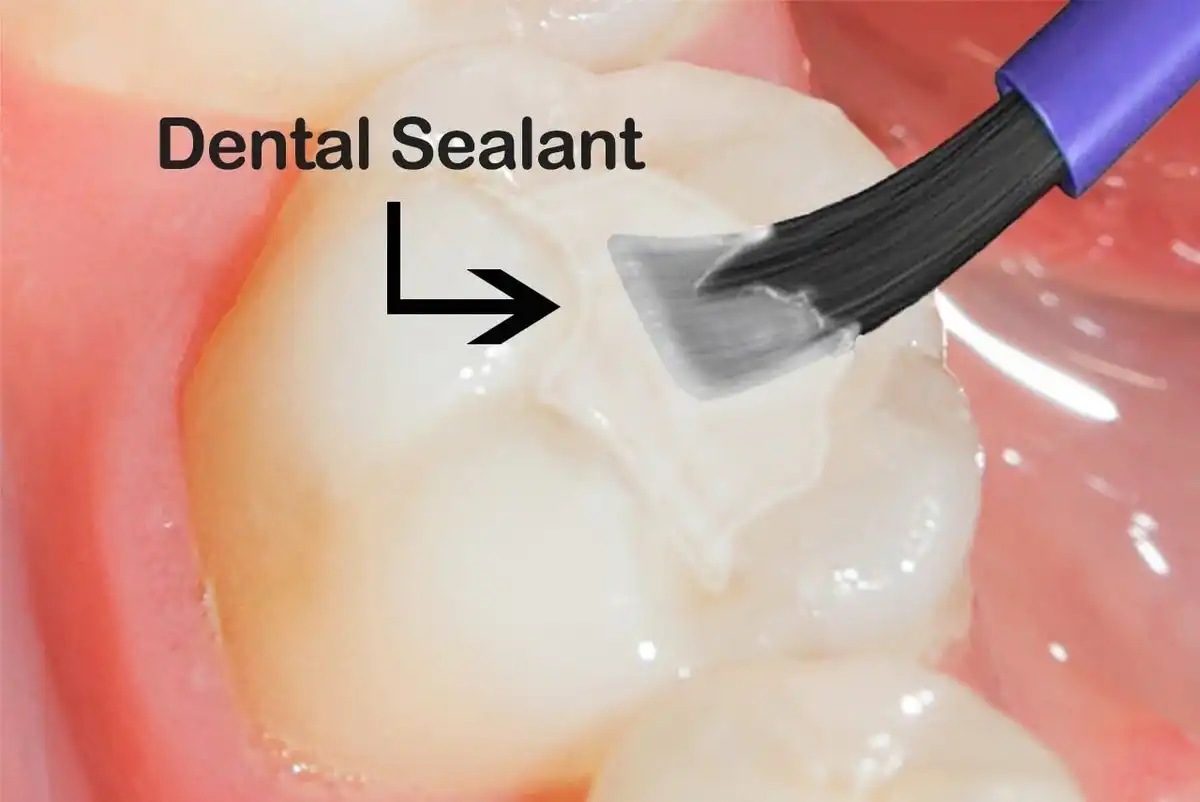Dental Sealants: Do You Need Them & Are They Safe?


You know how you put a protective lacquer over wood furniture to protect it? That’s kind of what it’s like to get dental sealants.
What Are Dental Sealants?
Dental sealants are thin plastic coatings that your hygienist or dentist applies into the deep grooves and pits on the chewing surfaces of your molars (back teeth.) This barrier helps prevent acids and bacteria from seeping into narrow areas that a toothbrush can’t reach so that you can lower you or your child’s chances of getting cavities.
Sealants are not dental fillings. Instead of going inside of your tooth like a restoration, they bond on top to protect the healthy enamel underneath. But we can only apply sealant material where there are grooves or pits because it won’t stick to smooth tooth surface.
The sealant itself is made out of a BPA-free material that’s a lot like plastic. It can be clear, white, or even come in different colors of the rainbow if you’re ok with your child having that. The tooth-colored ones will blend right in with the enamel so that it really isn’t visible to anyone other than your dentist.
Why Do I Need Dental Sealants?
Sealants are an elective preventive treatment. So, in the sense of treating oral infections, you don’t “need” them per se. But…if you’re prone to cavities or have really deep pits and grooves in the chewing surfaces of your molars, you could really benefit from getting sealants to reduce your chances of developing tooth decay.
The best time to get dental sealants is when a child’s first and second set of permanent adult molars are erupting. These teeth usually come in when they’re around the age of 6 and 12, respectively (give or take a year or two.) Once those teeth are totally in and all of the grooves are visible, sealants can be placed. Getting them this early significantly reduces the chances of cavities ever having a chance to start forming on that virgin enamel.
How Are They Applied And How Long Do They Last?
Getting sealants takes just a couple of minutes per tooth. There’s no numbing or drilling, so the process is way easier than most people expect (which is great, because most of the time sealants are placed on kids.)
First, the hygienist will isolate the tooth. Then, a small amount of conditioning gel is applied to the grooves to gently etch the outer layer of enamel. That’s rinsed away and then the tooth is completely dried and re-isolated; you don’t want any saliva to come into contact with the tooth, or the sealant won’t stick. From there, a tiny syringe and brush are used to place a thin layer of sealant material onto all of the grooves. Finally, a bright light cures the sealant so that it hardens in place. When you bite down, you might feel a funny taste or slightly high area for a day or two.
Are Dental Sealants Safe?
How Much Do Dental Sealants Cost?
Dental sealants cost approximately $40-$60 per tooth. Since dental sealants lowers your chances of tooth decay, most insurance companies cover them at 100% up to around age 14. But even if you’re paying for them out of pocket, they cost way less than a filling.
Dental Sealant Recap
Dental sealants are protective coatings we put in areas that are especially prone to cavities. They’re usually covered by insurance and only take a few minutes to apply. Dental sealants are a great preventive oral health treatment that protects permanent teeth from dental caries. It’s best to put sealants on permanent molars as soon as they erupt. But since they’re not permanent, you might need occasional touch-ups and have to avoid really sticky foods that can pull them off of your teeth.

Make your inbox smile!
Subscribe






